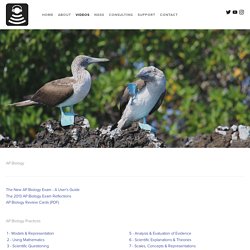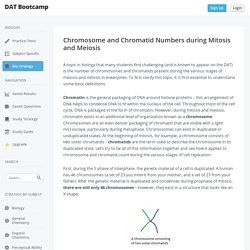

How to format Natural Selection Lab Report. How to format a Lab Report. Introduction to Genetics Biology B Lesson 5. Biology B Lesson 1 DNA and RNA.
Bozeman Science Biology Videos. Biology Unit 1: Introduction BiologyClassification of LifeEssential Characteristics of Life Hierarchy of LifeScientific MethodThree Domains of Life Unit 2: Chemistry of Life Biological MoleculesCarbohydratesLipidsMolecules of LifeNucleic Acids Polymers Positive & Negative Feedback LoopsProteinsWater & LifeWater - A Polar Molecule Unit 3: Cells Anaerobic RespirationATP: Adenosine TriphosphateA Tour of the CellBioenergetics Cancer - What is It?

EnzymesEvolution of Cell CommunicationGibbs Free EnergyHomeostatic EvolutionInterstitial FluidLife Requires Free EnergyMeiosis Phases of MeiosisMitosis Phases of Mitosis Osmosis DemoPhotosynthesis & RespirationSignal Transduction PathwaysSodaria CrossThe Cell MembraneThe Importance of OxygenTransport Across the Cell MembranesWater PotentialWhy Are Cells Small Unit 4: Genetics Unit 5: Evolution AbiogenesisCladogramsCoevolutionEvidence for EvolutionEvidence for Evolution IIEvolution ContinuesExamples of Natural SelectionGenetic DriftMicroevolution Animals.
Bozeman Science AP Biology Videos. AP Biology The New AP Biology Exam - A User's GuideThe 2013 AP Biology Exam ReflectionsAP Biology Review Cards (PDF) AP Biology Practices 1 - Models & Representation 2 - Using Mathematics 3 - Scientific Questioning 4 - Data Collection Strategies 5 - Analysis & Evaluation of Evidence6 - Scientific Explanations & Theories7 - Scales, Concepts & Representations Big Idea 1: Evolution 001 - Natural Selection002 - Examples of Natural Selection003 - Genetic Drift004 - Evidence for Evolution005 - Essential Characteristics of Life006 - Phylogenetics 007 - Speciation and Extinction008 - Speciation009 - Evolution Continues010 - Abiogenesis011 - The Origin of Life - Scientific Evidence.

SC Biology Standards. Carbon-14 Dating. Classification. Project 02 Cell Size. Lesson 21 Ecology. Ecology eoc review foley 2013. Biology EOC Review Resources - Home. The Biology Place. RNA Types. Biogeochemical Cycles. Concepts in Biochemistry - Cell Structure Interactive Animation. Chromosome and Chromatid Numbers during Mitosis and Meiosis. A topic in biology that many students find challenging (and is known to appear on the DAT) is the number of chromosomes and chromatids present during the various stages of meiosis and mitosis in eukaryotes.

To first clarify this topic, it is first essential to understand some basic definitions. Chromatin is the general packaging of DNA around histone proteins – this arrangement of DNA helps to condense DNA to fit within the nucleus of the cell. Throughout most of the cell cycle, DNA is packaged in the form of chromatin. However, during mitosis and meiosis, chromatin exists in an additional level of organization known as a chromosome. Chromosomes are an even denser packaging of chromatin that are visible with a light microscope, particularly during metaphase.
First, during the S phase of interphase, the genetic material of a cell is duplicated. For clarity, one sister chromatid is shown in green, and the other blue. Full summary chart: Paramecium, an introduction. Biology teaching resources by D G Mackean. Paramecium is a ciliate protozoan.

Ciliates’ bodies are covered with fine cytoplasmic hair-like structures called cilia. Flickering movements of the cilia propel the organism through the water and also create feeding currents. Paramecium is a ciliate. In describing its structure, comparisons will be made with amoeba. It is suggested, therefore, that amoeba is studied first. Unlike amoeba, paramecium has a distinct and permanent shape and certain areas of cytoplasm, (cell organelles), are specialised to carry out specific functions. Locomotion. If paramecium encounters an obstacle, it reverses the ciliary beat and moves back. Feeding. Any undigested matter is expelled through the anal pore. Reproduction. There is also a complex sexual process in which two paramecia join by their oral surfaces.
Osmoregulation.